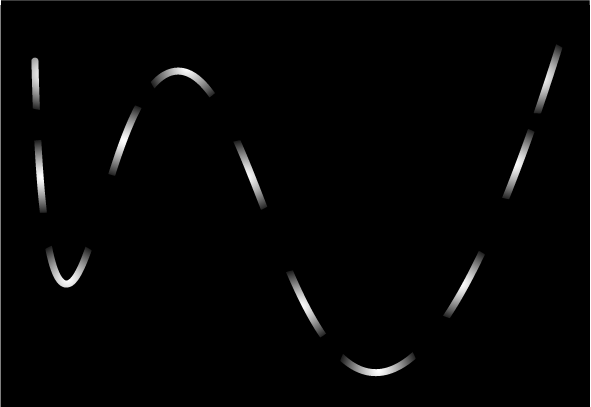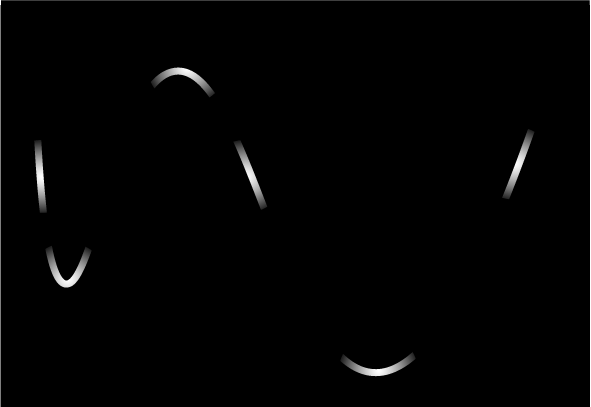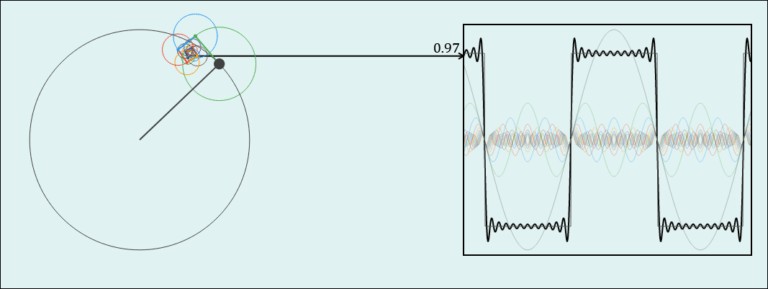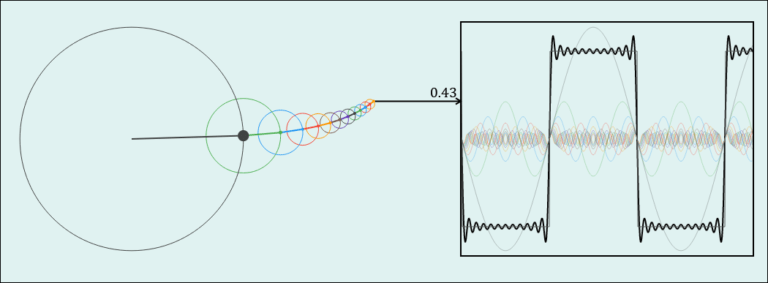this is an old post, written when my understanding was still primitive. Click here to read the new version.
Once upon a time, there lived a blind man in a village. One day his friend told him, “Hey, there is an elephant in the village today.”
The elephant had always been a mystery for him. The first time he heard about it was when he heard children puzzling each other: “How do you put an elephant into a fridge?”. He thought: “Well, just like we put food into it, isn’t it? Just open the door and put it inside, right?” So he asked them:
– So what is the answer?
– You open the door, put it inside, then close the door.
– Wait, what? Isn’t that obvious? So what is so special?
– Because it’s large?
– But even if it’s large, then isn’t that still obvious?
– Yes, but it’s large, you know.
– …
He tried to ask more, but both he and the kids went circular. He knew that it was because he didn’t know what the elephant was, but explaining that the elephant was an animal with a trunk didn’t really satisfy him. Instead of having an answer to the elephant, now he had a new question about the trunk. The conversation went to the path leading nowhere, and the elephant was still a mystery for him.
***
The moment of solving this mystery had come. Touching the trunk, he thought: “Oh, it’s like a snake”. Touching the leg, he thought: “Oops, it’s more like a tree”. Touching the tusk, he surprised: “What? Now it’s like a spear?”. What an animal!
“I really don’t understand”, yelled the blind man. “Why can it be like a tree, like a snake, like a spear at the same time?” He tried his best to explain what he knew in detail, hoping that the non-blinds could explain it. But for them, it was his question so nonsense. They, no different than him, tried their best to explain the animal in detail, but no-one could give him a satisfactory answer. Suddenly, he realized that they were talking a language that he couldn’t understand. He wished he could have been able to see it for once, but it seemed that it was out of his sight forever. The animal, right in front of his hand, seemed out of his reach.

For every proverb there is an opposite one. On one hand we should be simple, keep an open mind, be flexible, live for the present instead of what have pasted or haven’t come. On the other hand we have to do the right thing, be concentrated, keep discipline, learn from the past and plan for the future. These advice contradict each other, are easier said than done, and the balance point for one is the extreme for others.
I think, this frustration can only be solved once there is a satisfactory understanding on the nature of information. There are many theories and schools of thought in cognitive science and philosophy, but if it had been solved successfully then that dissatisfaction should have already disappeared too. How does a concept form? Where is its essence? Despite the effort, all of those terms are still ill-defined, let alone connects to rigor sciences like physics.
Two years ago I had an opportunity to read a short prose that was strikingly… abstruse. Although the author only wrote this to make sense of her world, I believed the two analogies she used are the keys to unlock this problem. The theory, at least, should tell the blind man why the elephant is like a snake and like a tree at the same time.
I do really think, if she had an interest in math, then she would be a true talent. But if she can’t realize the gem inside, then I’ll do that for her. Here is the result of that, serves mainly as a way to stop being clueless and bring back the imagination when you ever feel getting lost again. It is the development of Making concrete analogies and big pictures, so you may want to read it first for context. You can also read the summary of both.
Have fun.
The analogies
The first analogy is the pendulum, which is commonly used in Zen or Taoism. The extremes it swings back and forth represent the duality (me – you, good – bad, right – wrong), and the balance point is somewhere in the middle.

The visual effect of the pendulum comes from its velocity. The pendulum goes fastest at its balance point, and has zero velocity at the extremes. Therefore it can be seen wholly for a moment, before it gets fader to the balance point. The higher velocity the pendulum is, the clearer the extremes and fader the trajectory are. If it goes fast and far enough, the trajectory may completely faded, resulting two seemingly unrelated clear images.
In general, the trajectory of an object that constantly changing its velocity would go from clear to faded:

The second analogy is the moon. It’s not just a symbol of purity or solitude, but also where all the chaos of the world can be understood. The chaos is the source of all of the sufferings and happiness; transforms what we know unpredictably, brings the familiar to infinity, and the unfamiliar close to us.
I cannot help to realize this is the Riemann sphere:
In practice, changing the perspective is easier to imagine with anamorphosis art:


From now on, when “blurring the clearness” or “resetting the perspective” is used, this is what in my mind.
The theory
Nomenclature:
- Clearness: a thing you can name and understand, and can transfer from one mind to another.
- Fadedness: the connection links two close clearnesses in a movement, and cannot be transferred
- Movement: a complete line connects all the clearnesses in a perspective
- Perspective: what you observe in your self-awareness
Rules of perspective:
- A clearness in one perspective will be a fadedness in another one, and vice versa
- Focus at a clearness will make it become a movement. If not, it’s an isolated clearness
- When a new movement is formed, the perspective will automatically reset, and a new clearness will be registered
The equivalent between clearness and movement is called duality. It can be thought as a zoom in – zoom out mechanism, like fractal, but it’s for convenience rather than correct.
Rules of confusion:
You don’t get confusion when:
- There is no isolated clearness in the current perspective, and
- In each clearness you can see a movement inside it
***
At first, maybe long, round, and animal are the clearnesses the blind man see. These clearness uniquely exist in the movement named snake, so even when there is no venomous, they still connect. Once the movement is formed, the perspective resets and snake is a new clearness. The same thing happens with tree and spear.

But there is no movement that has these three clearnesses that he knows beforehand, so now he is confused. New clearness must be added more to make a whole new movement, but until these first clearnesses are connected his confusion won’t stop. This only changes when the turning points show up:

These turning points by themselves are just ordinary clearnesses, but in this particular perspective they happens to be… the turning points. Those can be the enlightening right words, or the connectives pushing the emotion to an extreme and swing back immediately. Together he will see:

There are still isolated clearnesses, but now he can see the fadedness between nearby clearnesses. To put it in another way, to make a clearness no longer isolated, there must be a fadedness around it.
With this success, he can gradually complete it:

Finally there is no isolated clearness left. All are connected into a movement, and the clearness elephant is born. His definition will be something relates to tree and snake, and when those clearnesses uniquely appear in another perspective, elephant will be called out too. Watching how the meaning flipping is interesting and gives us the sense of rigorousness.
Once the movement is completed, the perspective is reset. After the reset, some clearnesses are relocated, some disappears, some are new. elephant won’t disappear once it’s registered, but the movement “inside” it tends to shrink to minimal, and may not contain tree or snake anymore. The likelihood that tree will stay largely depends on whether there is elephant or not in the tree movement.
Now he can have a discussion on the extinction of mammoth, and is ready to adopt the rigorousness from Wikipedia:
Elephants are large mammals of the family Elephantidae and the order Proboscidea.
Straightforwardness
Not always the turning points are available. If snake, tree and spear are the only clearnesses he has, then changing the perspective is the only way to add new clearnesses. But still, there is no guarantee that the movement in the new perspective will be a turning point for the old one, or it can be completed at the first place.
I think, this is why a heart can’t listen to another heart. Changing perspective is the key to solve a problem, but it’s also the reason why the solution loses its straightforwardness. A problem leads to a problem leads to a problem, and the final movement is totally exotic to the original clearnesses. Resetting the perspective almost means losing the movement the expert having spent years to see, and worse, they don’t know what’s in the novice’s perspective to help them. If honest advices don’t go in one ear and out another, they will be easier said than done.
Since everyone is an expert of their own, sooner or later simple answers will be overlooked, and naïve questions will be repressed. If one shouldn’t lock oneself in only one perspective, then they should be able to find them again when needed. The fresh mind is always in another perspective, and can only be accessed when the current one is blurred. This can be done by imagining the idea is shaken like a toy or seen with nearsighted eyes, or by simply going to sleep. This is how the perfect translation of a foreign word pops up; until then that word will still be borrowed in the target language.
Why is the answer to “how to put an elephant into a fridge?” is “just do it”? Because inside the fridge there is a whole new perspective. Many more clearnesses come and go and changing many movements, until large and small are connected in an unexpected perspective. Looking at the cloud for a very long time and sometimes you’ll see a horse in there.
To be honest, I still can’t understand the first sentence of Critique of Practical Reason. But let’s say Kant considered
The starry heavens above me and the moral law within me
is straightforward, then shouldn’t his book have begun with this? It took blood, sweat and tears to get to the transcendental state, but the readers don’t need go through all of the perspectives he had to go through in order to land on the final perspective. All perspectives are equal, but if a perspective is more equal than others, then it can be accessed by just a good opening. The only prerequisite is that the readers must understand it vividly, or else his project cannot be transcended.
Consider these three statements:
(A) Math is like Greek
(B) Math is actually a language, linguistically
(C) Learning math should be like learning a foreign language
When one says “math is like Greek, therefore it should be learn like a foreign language”, they just list the clearnesses A and C, but there is no fadedness B connects the two, making the readers confusing or the sentence fragile for relying on an analogy. But since B exists in the movement A and C as clearness, it will be registered unconsciously. At that time, not only B needs not be explained explicitly, but also its absence will make the jump between one perspective to another acceptable.
So sentence after sentence, I just bring you from one perspective to another. The tricks in the previous article are meant to present a minimal movement in each new clearness before return to the article’s perspective. That way the confusion of not understanding the jargon is avoided, but the overall topic is not derailed. This sentence is in a different perspective to the previous ones, but together as a paragraph they are just clearnesses in the paragraph’s perspective, with a complete movement from “So” to “this”.
Fearlessness
Note: this section and the next one just sound reasonable rather than actually reasonable. Regardless of how much it helps me to be more stable, confident and sensitive than before, it’s just anecdotal evidence.
If the pendulum is thought as an oscillator, then the movement is a wave, and the clearnesses are the local extremums in amplitude:

Sometimes a clearness is very high by default, like emotion, especially extreme emotions like fear, rage, or anxiety, effectively makes other important clearnesses unseen:

No story about courage can help a person who had almost drown feels relax at the pool. When fear is overwhelming, swimming technique is repressed. The negative emotions really cut the confidence, threat the self, and overwhelmingly block rational thinking. Having to see all the effort spending to deal with the problem suddenly gone is so frustrating.
Saying “don’t be fear” is easier said than done, but saying “shake your fear like it’s just a toy” is more straightforward. Being blurred means it is viewed in a different perspective, and in that perspective, it’s less overwhelming. Not just fear, but anything can be shaken too; Eminem knows this better than anyone:
♪ The way you shake it, I can’t believe it
I ain’t never seen ______ like that ♪
It’s just a strategy to distract oneself from the negative feelings, but it’s still more productive than trying to repress it cluelessly, which only adds more pressure. In case the intimidation is so strong or when complicated ideas really need to be articulated, knowing the solution exists in another perspective will help them relief and stop making the situation messier:
*Heart pounding*
Oh no clearness! Blur! Blur! Blur!
*Stop to breath*
Ugh, mental block. I still don’t know what to say. Oh brains… It’s time to ask question.
*Ask question. Answer received*
Ugh, I have thought at this million times, but if I reply right now I’ll regret it. It’s time to break.
Usually the perfect response comes after a couple times the perspective changes, and it’s fun to see how the fear shrinks smaller each time. Even when they fail this time, the optimism and confidence will come in the next confrontation.
Improvisation
Each clearness, in its turn, can be viewed as a combination of various oscillators:


What can make the blind man not to take the idiom “the blind leading the blind” personally? The non-blinds just state the fact they see; denying it will repress them. But a bunch of oscillators is impersonal; they cannot hurt his self-esteem. If he is in good mood, he can even recall how the blinds really leads each other, and gain more self-worth. When the non-blinds have a new perspective to think about it, the negative cycle becomes positive.
Sharing some same oscillators makes us harmony, and having different ones locks us in different perspectives. When having no clue at all to drive a car/understand an art/learn a new word/be empathy, asking “what makes it resonated?” or “what it resonates with?” will reveal more about the context, because that’s the reason it becomes a clearness at the first place. One can still unable to pinpoint what it is, but at least can know what to act with it. In other words, two become one.
No parenting book can help a mom to know whether her child playing Counter Strike for months is a healthy hobby, an addiction to violence or a determination to become a professional gamer. Both sides barely understand the rationale of the others, but without being able to really put themself into the other shoe just for a moment, none of them can find the confidence to express their feelings without being afraid of having prejudice. To have a meaningful conversation, they have to constantly amplify the desired clearnesses as well as blur the undesired ones. This will make one be more sensitive to others, and less clueless on themselves.
With the discovery of more and more oscillators, our society is more fluid and complex than ever. Without the ability to control them, one cannot accept all possible outcomes, nor understand the differences. Without having a clue, the responsibility, and therefore maturity, cannot be grown. Know thyself, and you can protect yourself from being used, avoid craving for attention, or simply stop procrastination and grow a new habit.
As a theory of information
I do see my work is heavily influenced by Buddhism and Taoism, but I only read them really lately, long after having some experiences in translation, typography or strategy games like Go, football or StarCraft. Beside a little physics in undergraduate, all my knowledge in philosophy, linguistic, psychology, neuroscience, math or complexity theory are all self-taught, and that would make this table very weak:
| Clearness | Fadedness | Movement | Duality | |
| Complexity theory, information theory | Attribution, feature, property, pattern, node, component, information, concept, identity, Wikipedia | Interaction, edge, mapping, dynamic | Structure, system, map, network, model, essence | Emergence , specialization, classification, meta, fractal (?), feedback loop |
| Psychology, cognitive science | Stimulation, consciousness, perception, trigger, expectation, reward system, emotion, prejudice | Sensory processing, intuition, flow, inference, unconsciousness, tacit knowledge, others’ clearness | Knowledge, insight | Neuroplasticity, system 1 – system 2, adaptive expectation, self-awareness |
| Linguistics | Segment, emoji, noun | Suprasegmental, conjunctions, idiom, hyponymous juxtapositions | Sentence, discourse | Verbify, signified – signifier |
| Philosophy |
|
|
| -ism, -fication, informal logic – formal logic, logocentricism, différance |
Aren’t language and cognition born for optimization, which in it turns just to select which and how oscillators would be resonated? Is psychological stimulation the same with physiological stimulus, because brainwave is just made from harmonic oscillators (physicalism)? Likewise, is there a relation between psychodynamics and brain dynamics, where both the consciousness and neural phenomena are transient? Is this the cause of synesthesia, in which a person can literally see an orange triangle in space when they hear a trumpet? Are the first stages in Piaget’s theory of cognitive development because the child hasn’t acquire much oscillators?
What is the relation between large-scale oscillators and small-scale oscillators? To have an oscillator, there must be a variable to solve a differential equation. That variable must represent a clearness, because without having a definition, there won’t be data, statistics or experiments. Is exploration, or curiosity, just acquiring more oscillators? Is the hierarchy of knowledge just an illusion, although practically useful, because the perspective is always reset?
If the clearness is just the velocity of the object, then (1) technically it should be the relative velocity, and (2) as long as we have the same instant velocity, then there is a clearness between us?

When I say “view the clearness with nearsighted eyes to blur it”, I couldn’t think that it has already been well researched in signal processing:

Innumerous attempts have been made to make connections between Buddhism and science, especially with quantum mechanics. But the Buddha was born thousand years ago, absolutely had no math background, how could he see the Heisenberg’s uncertainty? I think no matter what he saw, a theory to bridge the two must satisfy these:
- It must be intuitive enough to explain to a kid (epistemology)
- It must help an adult to overcome their fears by themselves (phenomenology)
- It must exist in all experiments in any field of science (metaphysics)
I think the Fourier transform with the velocity approach satisfies these. Since this theory bases on separated analogies from projective geometry, dynamical systems and harmonic analysis, reconciling them will be a concrete analogy for it. The Galilean transform may play a role here, and I would definitely relearn the Maxwell’s equations.
Examples
1
How could Thich Quang Duc tolerate the pain to remain calm during his self-immolation? High cortisol level can numb significant pain, but I’m not convinced that he was just calm at the surface but was fighting with the burn inside.
Long-term meditators is known to be able to activate gamma wave on-demand to go in unconsciousness and having dissociation to the outside world. Perhaps meditation is a way to master embodied oscillators without the need of conceptualization? It’s possible I think, but really hard. Can AI do the same?
2
So can we have the theory of everything?
I… really don’t know. But let’s assume that we just find it out today, and tonight we are going to have the largest party ever. WE KNOW EVERYTHING!
What would happen after a couple months? Do we still believe in it psychologically? Sure, the experiments will always confirm the theory, but since the nature of science is to doubt what you believe in, I think we always find new perspectives to explore. Would we stop finding new perspective?
The theory of everything would dictate how we understand it. How would it present itself to a kid? If it can explain the small-world network, can it be explained by introducing 6 new terms only? Can we know whether a cat know it too? Can it help us less afraid of sitting on a fire? I think, if we are serious to find the theory of everything, then we should also be serious to explain it to a kid.

Bibliography:
Arnold, Douglas, and Jonathan Rogness, Mobius Transform Revealed
Ben Grawi, ‘Understanding Fourier Approximations & Oscillators’, 2016
Cherry, Kendra, ‘What Is the Psychology Behind People’s Prejudices?’, Verywell Mind
Dunning, Mike, Pendulum
Hurwitz, Jonty, Tribute To Holbein
Koch, Christof, ‘The Brain of Buddha’, Scientific American Mind, 2013
Mitchell, M., Complexity: A Guided Tour (Oxford University Press, 2009)
Mitra, P., and H. Bokil, Observed Brain Dynamics (Oxford University Press, USA, 2007)
Needham, T., Visual Complex Analysis (Clarendon Press, 1998)
Nguyễn Băng Ngọc, Dấu Vết Thiên Di (Trace of Migration)
Roach, Mary, Packing for Mars : The Curious Science of Life in the Void (W.W. Norton, 2010)
Veritasium, Learned Helplessness
Wallace, B.A., Buddhism and Science: Breaking New Ground, Columbia Series in Science and Religion (Columbia University Press, 2003)
Wait But Why, ‘Religion for the Nonreligious’, Wait But Why, 2014
Leave a Reply